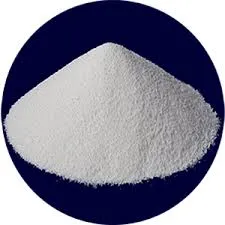- Afrikaans
- Albanian
- Amharic
- Arabic
- Armenian
- Azerbaijani
- Basque
- Belarusian
- Bengali
- Bosnian
- Bulgarian
- Catalan
- Cebuano
- Corsican
- Croatian
- Czech
- Danish
- Dutch
- English
- Esperanto
- Estonian
- Finnish
- French
- Frisian
- Galician
- Georgian
- German
- Greek
- Gujarati
- Haitian Creole
- hausa
- hawaiian
- Hebrew
- Hindi
- Miao
- Hungarian
- Icelandic
- igbo
- Indonesian
- irish
- Italian
- Japanese
- Javanese
- Kannada
- kazakh
- Khmer
- Rwandese
- Korean
- Kurdish
- Kyrgyz
- Lao
- Latin
- Latvian
- Lithuanian
- Luxembourgish
- Macedonian
- Malgashi
- Malay
- Malayalam
- Maltese
- Maori
- Marathi
- Mongolian
- Myanmar
- Nepali
- Norwegian
- Norwegian
- Occitan
- Pashto
- Persian
- Polish
- Portuguese
- Punjabi
- Romanian
- Russian
- Samoan
- Scottish Gaelic
- Serbian
- Sesotho
- Shona
- Sindhi
- Sinhala
- Slovak
- Slovenian
- Somali
- Spanish
- Sundanese
- Swahili
- Swedish
- Tagalog
- Tajik
- Tamil
- Tatar
- Telugu
- Thai
- Turkish
- Turkmen
- Ukrainian
- Urdu
- Uighur
- Uzbek
- Vietnamese
- Welsh
- Bantu
- Yiddish
- Yoruba
- Zulu
10 月 . 01, 2024 17:07 Back to list
Effective Disinfectants for Maintaining Animal Facility Hygiene and Health Standards
The Importance of Animal Facility Disinfectants Ensuring Health and Safety
In animal facilities, maintaining a sterile environment is paramount to the health and safety of both the animals and the personnel who care for them. Veterinary clinics, research laboratories, zoos, and farms all face the critical challenge of disease control and prevention. This is where effective disinfectants come into play. Animal facility disinfectants are specialized products designed to kill harmful pathogens, control infectious diseases, and provide a safe living environment for animals.
Understanding Pathogen Transmission
Animals, like any living organisms, can carry and transmit a variety of pathogens. Bacteria, viruses, fungi, and parasites can easily spread in confined spaces where animals interact closely. For instance, in research facilities where animals are often housed together, the risk of outbreaks of zoonotic diseases increases significantly. Moreover, human handlers can inadvertently become vectors for these diseases if proper hygiene and cleaning protocols are not followed. The effective use of disinfectants is essential for interrupting these transmission pathways and minimizing infection risks.
Types of Animal Facility Disinfectants
Animal facility disinfectants come in various formulations, each suited to different applications and types of pathogens. The main categories include
1. Quaternary Ammonium Compounds (Quats) These are effective against a range of microorganisms, including bacteria and some viruses. Quats are often used for disinfecting surfaces in facilities due to their residual activity and low toxicity.
2. Chlorine Compounds Sodium hypochlorite, commonly known as bleach, is a potent disinfectant that can eliminate a wide spectrum of pathogens. However, care must be taken with its application, as it can be harsh on some surfaces and has a strong odor.
3. Hydrogen Peroxide This is a versatile disinfectant that decomposes into water and oxygen, making it environmentally friendly. It is effective against bacteria, viruses, and spores, making it ideal for critical areas within animal facilities.
4. Phenolic Compounds These disinfectants are effective against a broad range of pathogens and are often used in veterinary clinics. They are particularly useful in controlling infections in surfaces that come into contact with animal waste.
5. Peracetic Acid Known for its rapid action against bacteria, viruses, and fungi, peracetic acid is effective even in the presence of organic matter, making it a robust choice for animal facilities.
animal facility disinfectant

Application Strategies
For disinfectants to be effective, proper application strategies must be employed
. Key considerations include- Surface Preparation Before applying disinfectants, surfaces must be cleaned of organic debris, such as dirt, blood, and other organic matter, which can shield pathogens from the disinfectant action.
- Contact Time Each disinfectant has a recommended contact time, which is the duration it needs to remain wet on a surface to effectively kill pathogens. It’s vital to follow these guidelines to ensure efficacy.
- Concentration Proper dilution is critical. Using disinfectants at the right concentration enhances their effectiveness while minimizing potential toxicity to animals and humans.
- Routine Schedules Establishing a routine cleaning and disinfecting schedule ensures that high-touch surfaces and areas frequently visited by animals are regularly sanitized.
Training and Compliance
Staff training is essential in effectively using disinfectants in animal facilities. Including protocols for personal protective equipment (PPE), safe handling practices, and emergency procedures helps mitigate risks associated with chemical exposure. Moreover, compliance with regulations set forth by veterinary and health organizations ensures that facilities meet industry standards for cleanliness and safety.
Conclusion
Animal facility disinfectants play a crucial role in protecting both animal health and public safety. Understanding the types of disinfectants available, their specific applications, and adherence to proper usage protocols can significantly reduce the risk of disease transmission. By prioritizing a clean and disinfected environment, animal facilities can ensure the well-being of their residents and the safety of their human caretakers, leading to a healthier and more productive atmosphere for all involved.
-
The Power of Radix Isatidis Extract for Your Health and Wellness
NewsOct.29,2024
-
Neomycin Sulfate Soluble Powder: A Versatile Solution for Pet Health
NewsOct.29,2024
-
Lincomycin Hydrochloride Soluble Powder – The Essential Solution
NewsOct.29,2024
-
Garamycin Gentamicin Sulfate for Effective Infection Control
NewsOct.29,2024
-
Doxycycline Hyclate Soluble Powder: Your Antibiotic Needs
NewsOct.29,2024
-
Tilmicosin Premix: The Ultimate Solution for Poultry Health
NewsOct.29,2024













